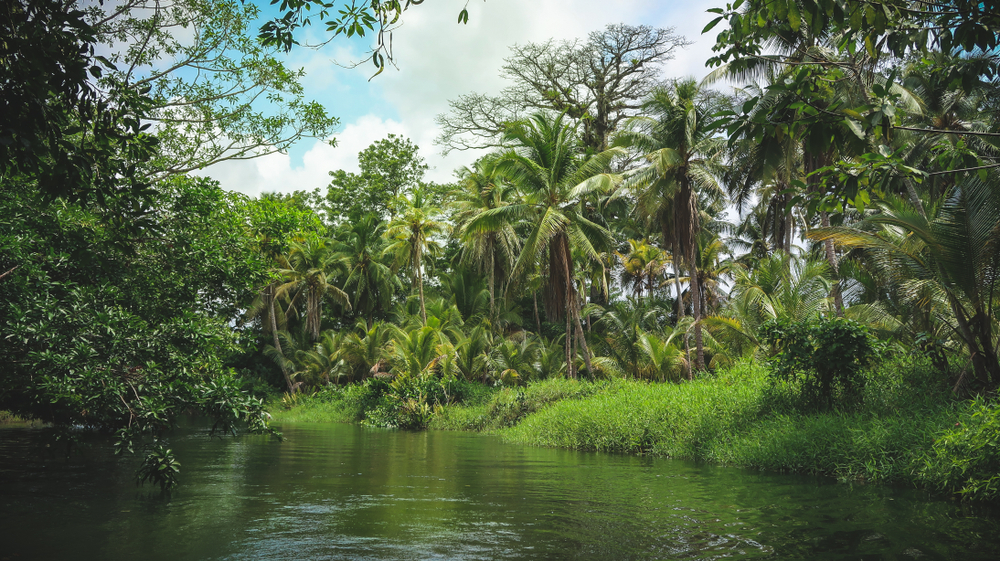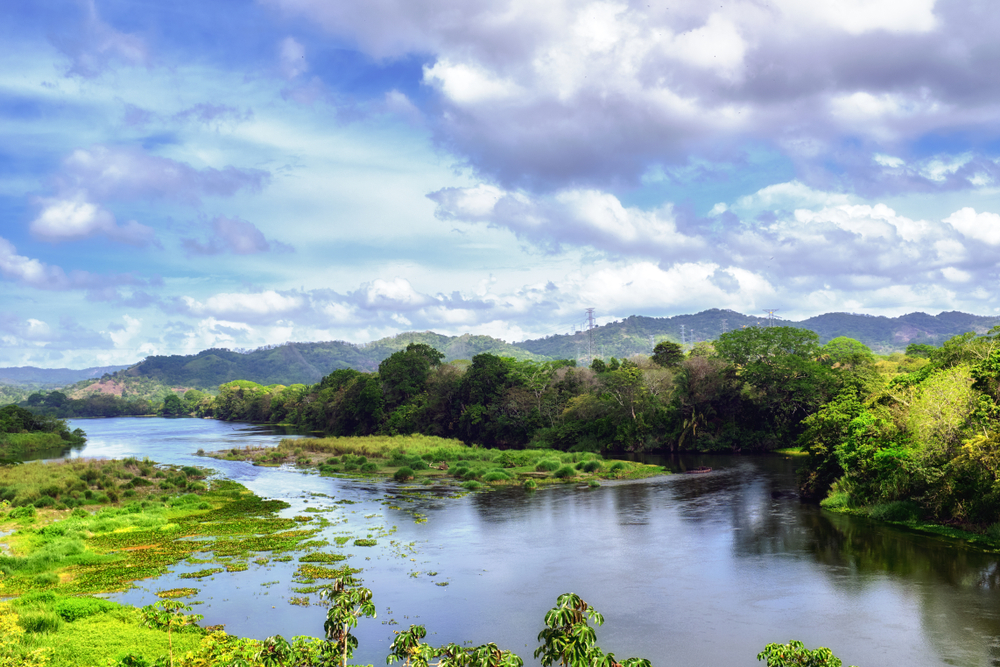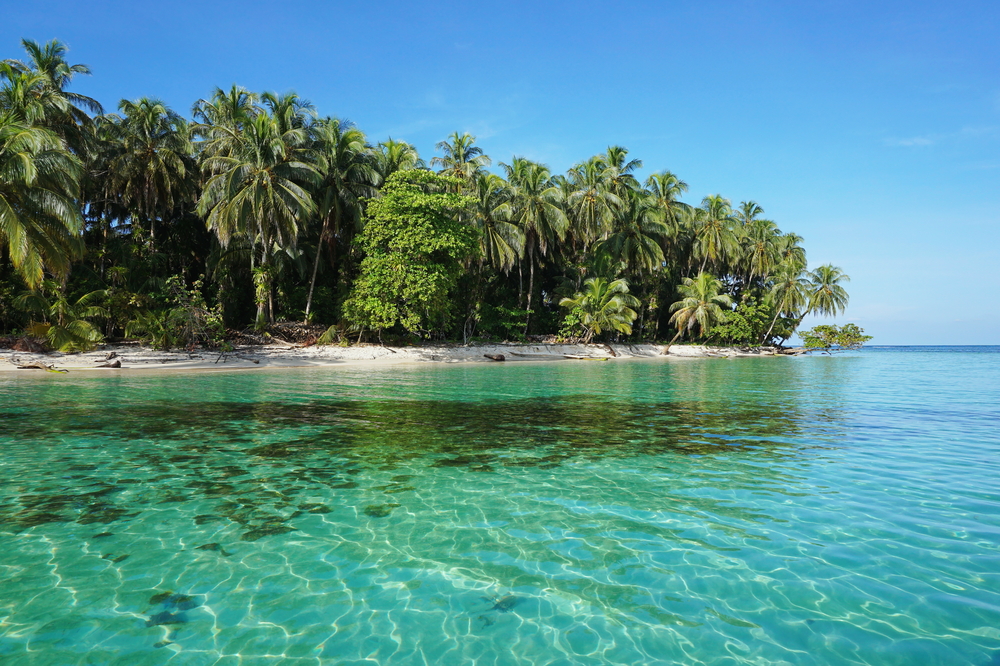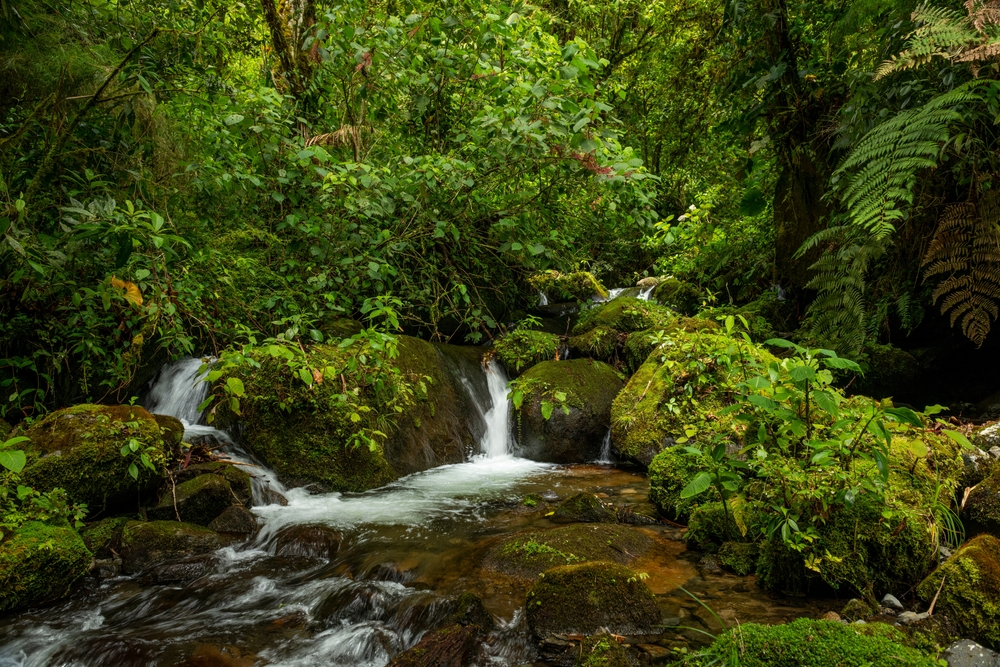Portobelo Overview
Portobelo National Park, or Parque Nacional Portobelo in Spanish, is a stunning protected area located along the Caribbean coast of Panama in the Colón Province.
Covering approximately 159 square miles (412 square kilometers), the park is named after the historic town of Portobelo, a significant colonial port that played a vital role in Spanish trade during the 16th and 17th centuries.
The park was established in 1976 to preserve the region’s diverse ecosystems, including coastal forests, mangroves, coral reefs, and seagrass beds, while also protecting the historical and cultural heritage of the area.
The terrain of Portobelo National Park is characterized by lush tropical forests, rolling hills, and an extensive coastline with pristine beaches and crystal-clear waters. Dense mangrove forests line the shores, creating essential habitats for marine and bird species.
Offshore, vibrant coral reefs and seagrass meadows provide refuge for an abundance of marine life. The park is home to Cerro San Fernando, one of the most prominent elevations in the region, offering sweeping views of the Caribbean Sea and the surrounding forest. Numerous small rivers and streams meander through the park, further enriching its biodiversity.
Wildlife in the park is diverse, with a mix of terrestrial and marine species. Among the mammals that inhabit the park are howler monkeys, white-faced capuchins, ocelots, and agoutis. The coastal forests also provide shelter for anteaters and sloths.
Bird enthusiasts will find a variety of species, including toucans, trogons, and hummingbirds, as well as migratory birds that use the area as a resting point. The coastline and mangroves attract shorebirds, pelicans, and frigatebirds, making the park an excellent destination for birdwatching. Marine life is equally rich, with sea turtles, dolphins, and numerous tropical fish species found in the coral reefs and coastal waters.
One of the most popular attractions within Portobelo National Park is its connection to Panama’s colonial past. The town of Portobelo itself is a UNESCO World Heritage Site, featuring well-preserved Spanish forts such as San Lorenzo and Santiago de la Gloria.
Visitors can explore the historic ruins, visit the Church of San Felipe, and learn about the region’s history at local museums. The park’s beaches, including Playa Huerta and Playa Blanca, are favored spots for relaxation, snorkeling, and diving.
The coral reefs teeming with marine life make for excellent underwater exploration, drawing both snorkelers and scuba divers. Kayaking and boating through the mangrove forests offer a unique way to experience the park’s coastal ecosystem.
Visitors can engage with the park through a variety of activities, ranging from hiking along jungle trails to diving in the clear Caribbean waters. The park’s coastal setting makes it an excellent location for water sports, including sailing, fishing, and paddleboarding.
Nature enthusiasts can embark on guided wildlife tours, while cultural tourists can immerse themselves in the town’s Afro-Caribbean heritage, especially during events like the Festival of the Black Christ, a major religious celebration held annually in Portobelo.
Conservation efforts in Portobelo National Park focus on protecting its diverse ecosystems, particularly its fragile coral reefs and mangrove forests. Coastal development and pollution pose ongoing threats to marine biodiversity, and conservation organizations work alongside local communities to promote sustainable tourism and environmental awareness.
Successes include the preservation of historical sites, ongoing marine conservation programs, and increased local involvement in ecotourism initiatives. The park remains an important area for both biodiversity and cultural heritage, making it a key destination for visitors seeking history, nature, and adventure.

















































































